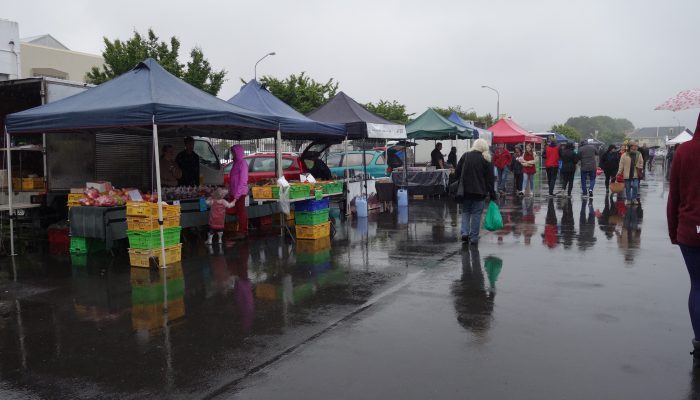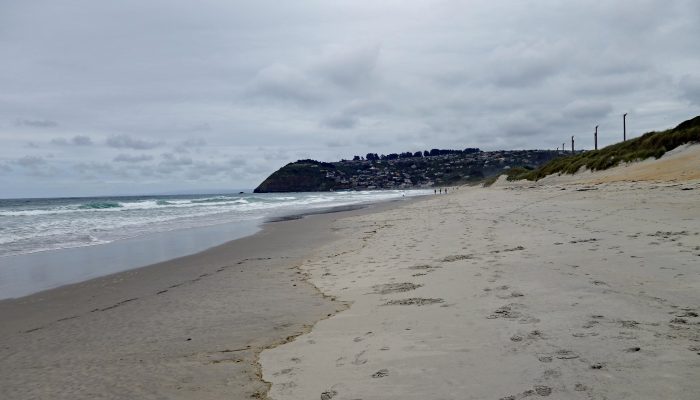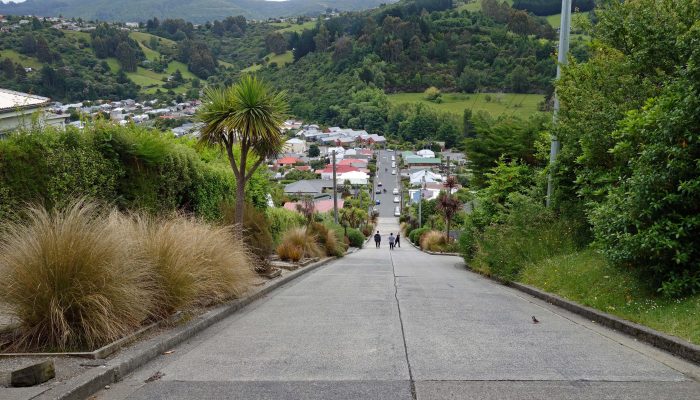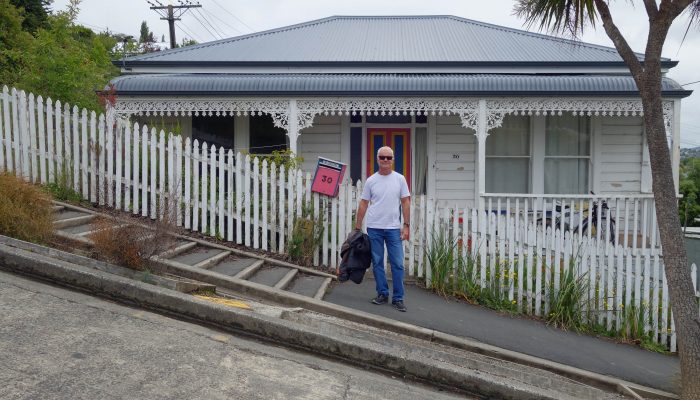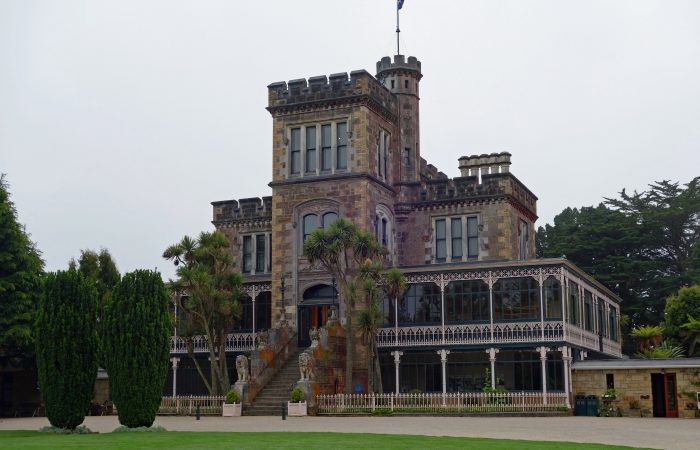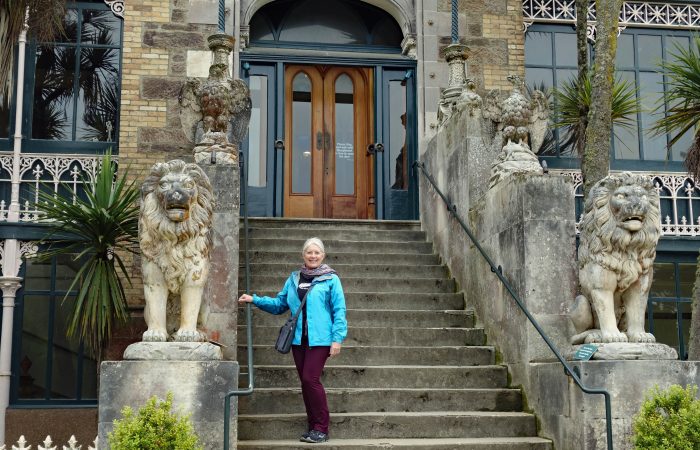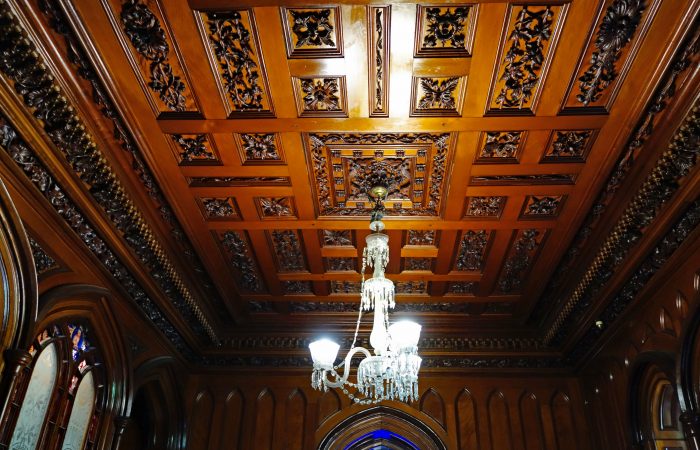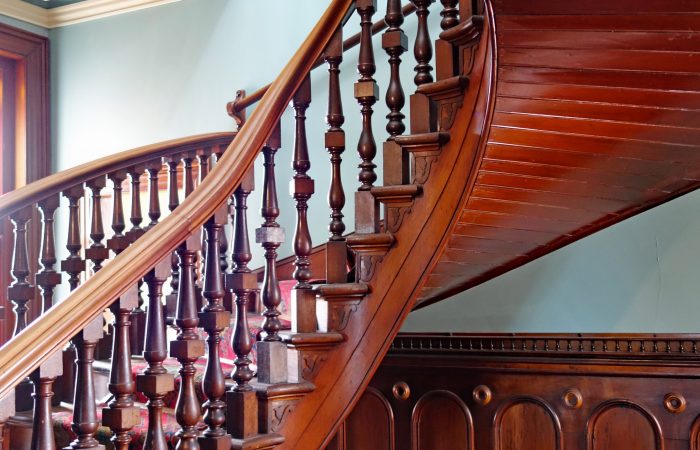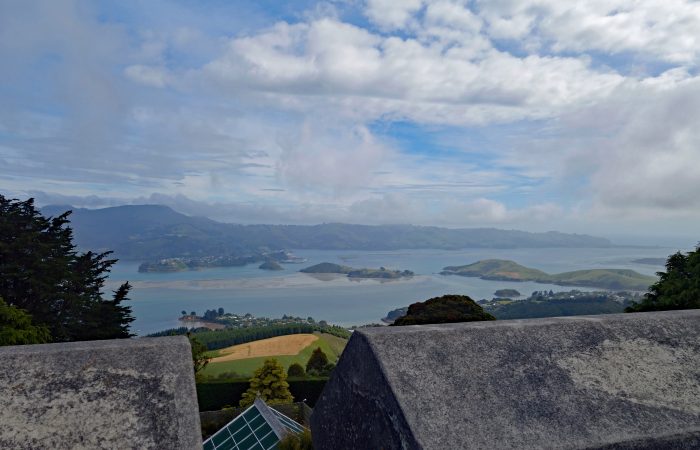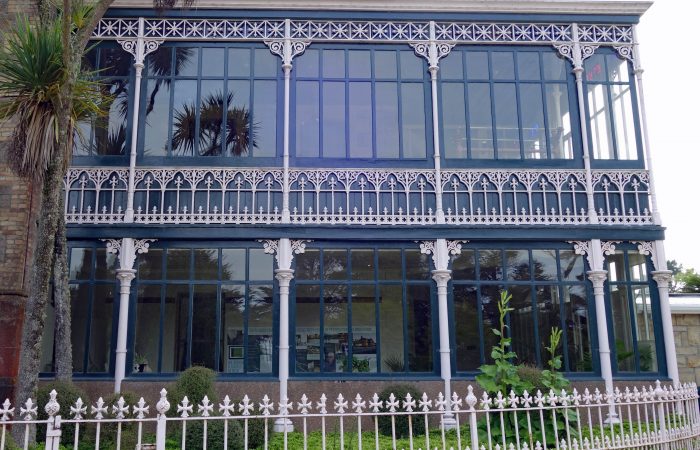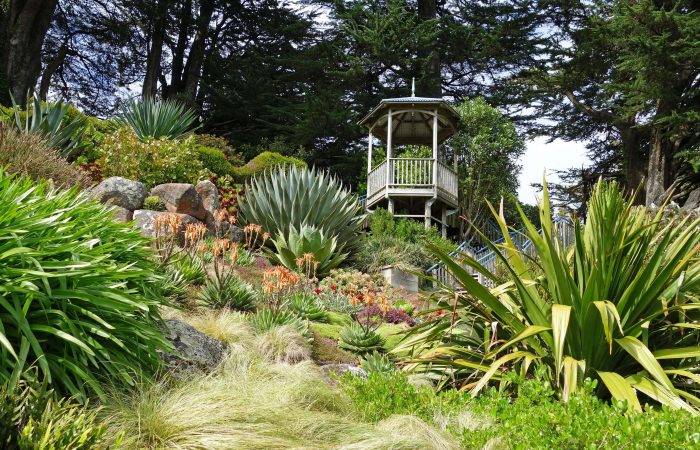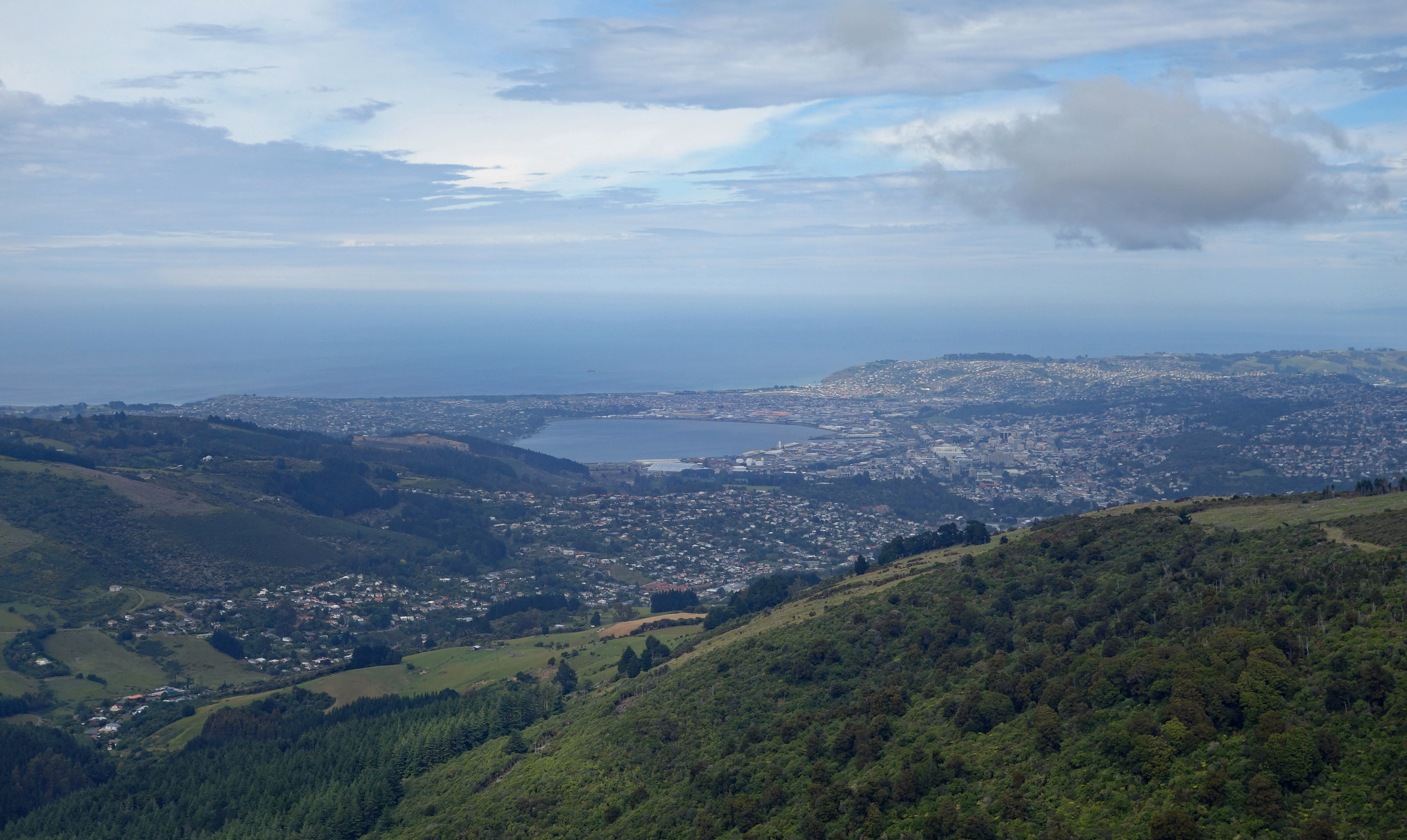
Saying goodbye to Fiordland we traveled across the South Island to Dunedin on the east coast. Our day took us from the high mountains through rolling farmland and fields of sheep, you cannot travel anywhere on the South Island without seeing thousands of sheep 🐑🐑🐑 Dunedin is the second largest city on the South Island (approx population of 135,000) settled by Europeans in the early 1800’s. Developed in the Victorian era there are many buildings from that time, including the place we stayed. Our Airbnb was in an old manor house built in 1850 and converted to 3 apartments. That meant everything was pretty well used, despite some upgrades, and no soundproofing between apartments ☹ Not one of our best picks!! But as experienced travelers (ha ha ha) we made the best of what we had, not helped by the unseasonable weather that continues to plague our time on the South Island. 8 days in Dunedin may have been a bit too long with not that much to do and I think we are both getting grumpy with the cold, wet weather, wishing we were somewhere else right now! Dunedin is one of the cloudiest cities in New Zealand with 1,650 hours of sunshine a year, compared to Calgary with 2,400 hours per year of bright sun, how did we miss this in our research? Despite the gloomy weather we explored our surroundings whenever there was a break in the rain, discovering some lovely places.
Our first excursion was to Taiaroa Head on the tip of the Otago Peninsula. Taking advantage of the only sunny afternoon of the week we admired the expanse of green fields and sheer cliffs dropping into the ocean. The head of the peninsula is home to the world’s only mainland colony of Royal Albatross with an educational center on site. We toured the exhibits but did not take the outdoor guided tour when I overheard a guide explain the birds were nesting and we would probably not see any in flight. The only wildlife we saw were a few seals lounging on the rocks at the base of the cliff, including a few tiny baby seals in the group, oh and a few thousand screaming seagulls 😂
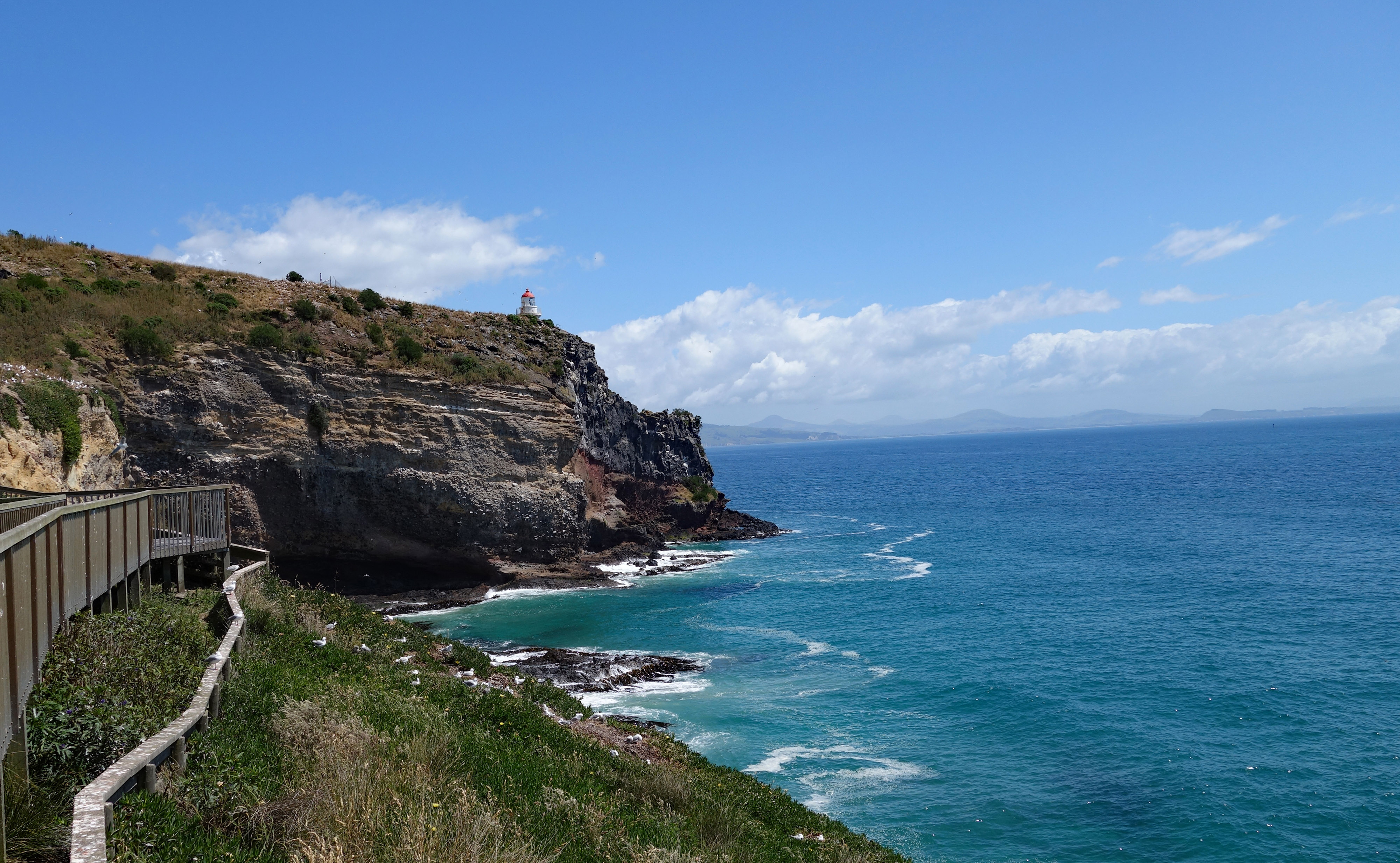
The Octagon is the city center of Dunedin, an 8 sided plaza bisected by the city’s main street and hub of the city’s restaurant and cafe culture. Predominantly a pedestrian area the upper half is dominated by a statue of the Scottish poet Robert Burns behind which sit St Paul’s Cathedral and Dunedin Town Hall. Laid out in the mid 1800’s it rose to prominence as the city’s central area but it was not until a major renovation during the 1980’s that it became a popular destination. New Year’s Eve celebrations are held annually in the Octagon and a weekly street market on the lower half of the Octagon draws residents and visitors alike.
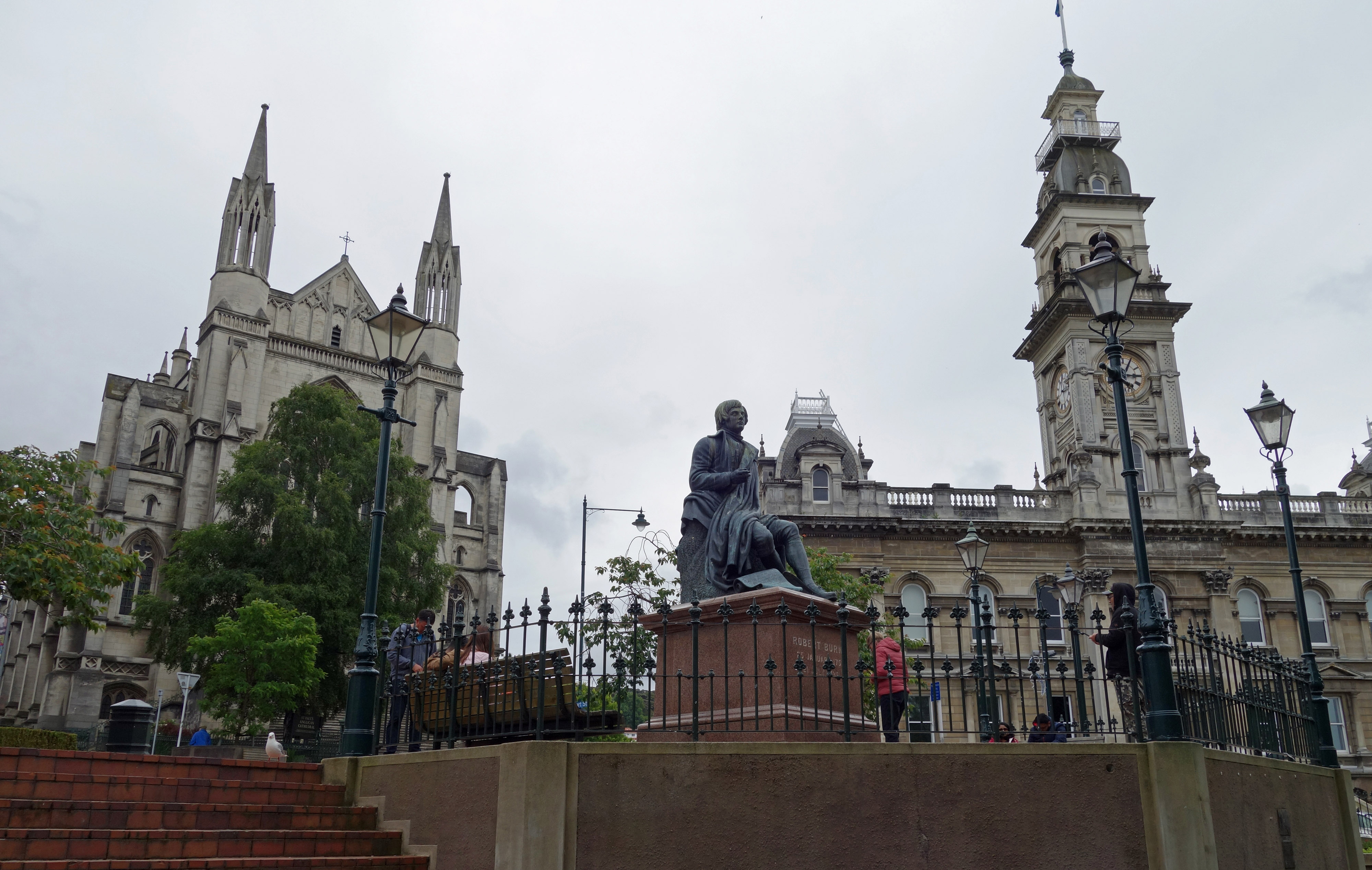
St Paul’s Cathedral sits at the top of the Octagon and it’s tremendous vaulted ceiling is the only one in New Zealand built of stone. The original church was built in 1862-1863 however the stone weathered badly and the spire had to be removed. Disagreements and lack of funds delayed construction of the new cathedral until the first stone was laid in 1915 reaching completion in 1919. We enjoyed touring the church and had a lively conversation with a member of the clergy when she found out we were from Calgary, she had been there 3 months ago.

The First Church of Otago is regarded as one of the most impressive of New Zealand’s nineteenth-century churches built in decorated Gothic style. Externally the church replicates, on a smaller scale, the late Norman cathedrals of England. The current building was opened in 1873 taking 6 years to complete. It is crowned by a spire rising to 56.4 meters (185 ft) which can be seen from most of central Dunedin.

Christmas Eve was a rainy day but we forged ahead and went to the farmers market to see if there were any Christmas treats we could pick up. The market seemed low key, perhaps due to the poor weather, but we found a lovely Cranberry/Orange/Port chutney to liven up our turkey roast. Christmas morning dawned cloudy but dry so we took a drive out to St Kilda beach for a long walk and some fresh air. Despite the wind and cold water there were a few hardy young folks out surfing. From the beach we drove to North Dunedin in search of Baldwin Street. According to the Guinness Book of Records this was the steepest street in the world until 2019 when it was superceded by a street in Wales. At Baldwin Street’s steepest point, about 70 meters from the top, the gradient is 35%. The street is surfaced in concrete as chip seal or asphalt would run downhill in warm weather. It was quite a hike to the top of the hill, I would not want to drive a car up here, nor would I want to live on such a steep street!
The Otago Peninsula is home to New Zealand’s only castle so we headed out there on Boxing Day for a look around the stately Larnach Castle. This splendid mansion was built by Australian banker William Larnach from 1871 to 1874 in a Gothic Revival style, importing plasterers from Italy to create intricate designs all around the house. There are magnificent carved mahogany ceilings, one of which took 3 people 6 years to carve. Gorgeous hand etched Venetian glass adorns the entryway above Belgian ceramic floor tiles. Between floors is a stunning Georgian hanging staircase, the only one in the Southern hemisphere. On the top floor there is a narrow stone spiral staircase taking you to the top of the battlements where commanding views from Dunedin to the head of the peninsula await.
The Larnach family sold the estate in 1906 and it fell into a state of disrepair until 1967 when it was bought by the Barkers. Their goal is to restore it to it’s original grandeur, and what a fabulous job they have done so far. It is a continuous and ongoing project funded by tourism dollars generated from the entry fees. We arrived at the Castle before 9:30 am buying early bird tickets at a cost of NZD $25.50 (USD $16.80) each. That turned out to be a great idea, we had the castle to ourselves for quite a while, as the morning wore on the busloads of tourists began arriving. Outside the castle we walked the beautiful 7 acres of cultivated gardens surrounding the property, capping our visit off with cream tea in the ballroom. It was a gorgeous way to spend Boxing Day 😊
It seemed no matter where we drove in Dunedin we passed by the Dunedin Railway Station, one of the city’s most prominent architectural landmarks. Built in 1906 it is famed for it’s Flemish Rennaisance style and characteristic “gingerbread” appearance, featuring local white limestone and black basalt, and tiled with terracotta shingles from Marseilles. The interior is not as grand as the train stations we found in Europe. It is no longer used exclusively as a train station, mainly housing a restaurant and museum. Every Saturday the car park turns into the Otago Farmers Market, we visited twice picking up some Dunedin-made goodies each time. No matter where we are in the world, farmers markets are a glimpse into local life and the best way to try regional products.
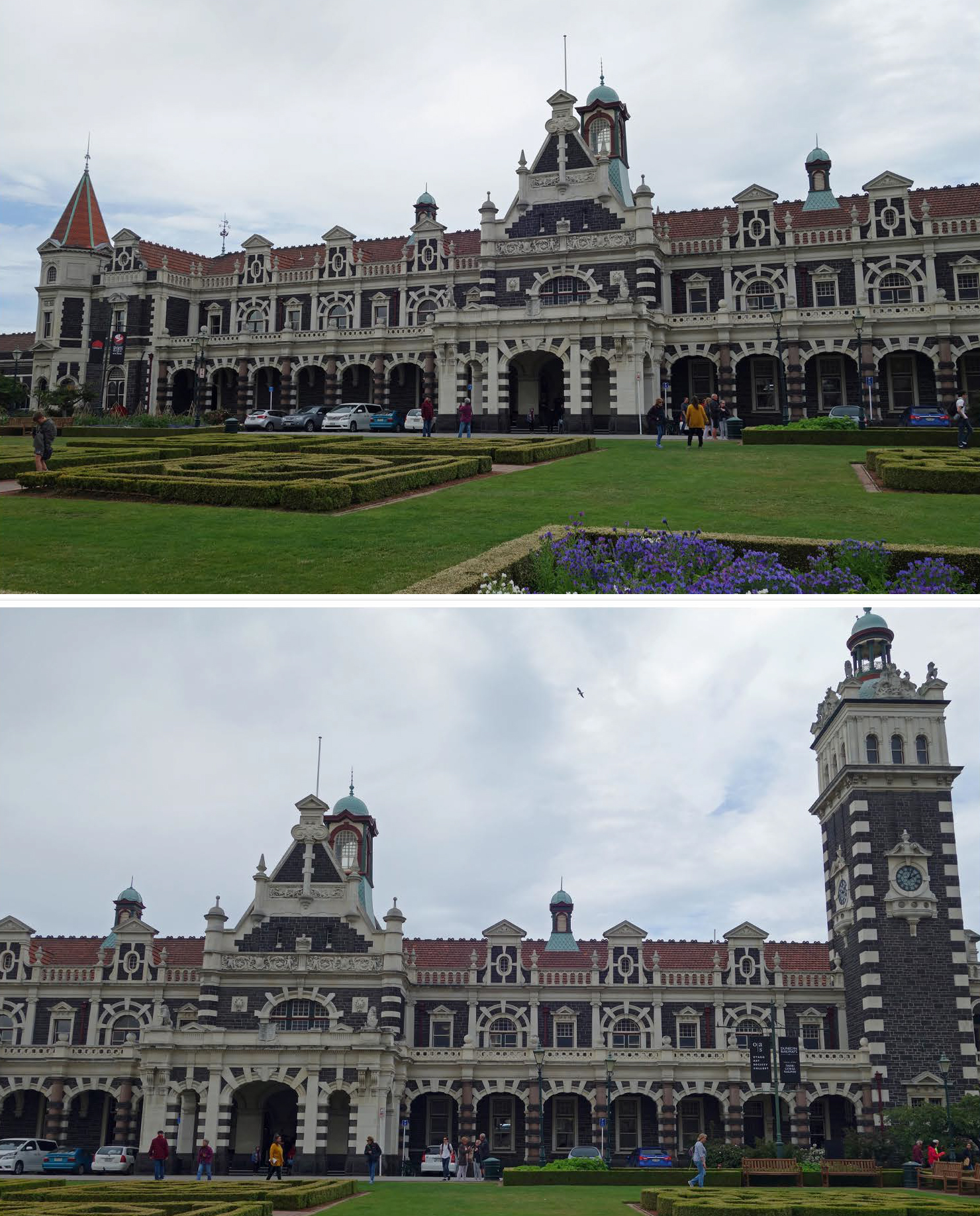
As I said at the beginning, 8 days in Dunedin may have been a bit too long, especially with bad weather hampering our sightseeing. I’m sure we could have found more things to do had it been sunny but we now turn our sights north to Christchurch, the final destination in the New Zealand leg of our tour down under…
